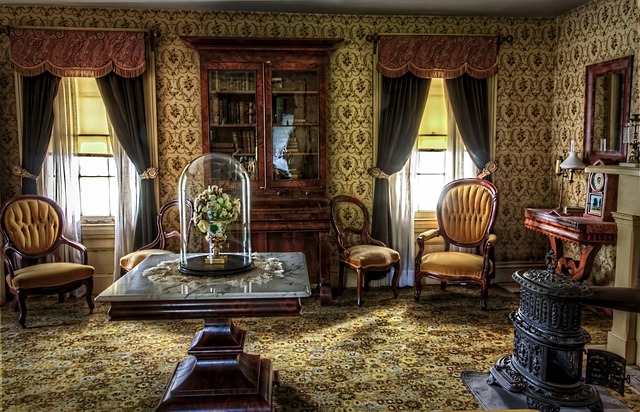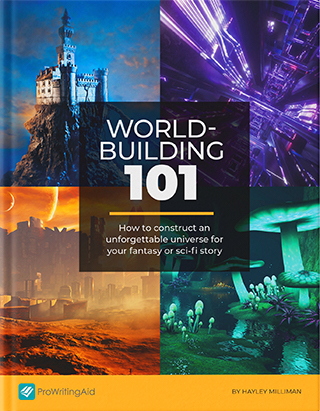
Good stories require an immersive world into which to plunge readers: dystopian futures, alien planets, fantasy realms and, in this case, particular places and moments in history.
More than elements of immersive storytelling, historical accuracy and attention to detail will ground your characters’ relationships, motivations, and conflicts.
In real life, people make decisions in reaction to the circumstances that have influenced their lives and in response to events happening around them. The same goes for compelling characters.
To write successful historical fiction, you’ll need to pay attention to three key elements to direct your research and writing: the infrastructure and sensory experience of your world, the political and cultural structures your characters will navigate, and the relationship between your characters and their environment (why is your story set when and where it is?).
Historical scholarship and primary sources from the period should guide the decisions you make about setting, conflict, and character development.
But, once you’ve done enough research to feel immersed in the period you’re writing about, you have free rein to shape the world as you see fit. Historical accuracy is important, but so is authenticity to the characters and relationships you’ve written.
Create a Basic Infrastructure
Think about the logic and basic infrastructure that govern your life. How do you find food and what kind do you eat? What’s your house like? How do you get from place to place? What do you wear? How do you support yourself?
Your characters should have compelling answers to these questions, even if you don’t state them explicitly in the text. These questions make up the ground rules of your world, drawing boundaries around what your characters need to survive and thrive.
The best way to find information about life in the past is to turn to a good library, possibly one at a local college or university, which will have a broad selection of scholarship. You’re looking for classic social histories that explore the ways that ordinary people lived in the past.
Social history has gone out of fashion in academic history departments these days, in part because they’re often light on theory, aiming instead for accessibility and engaging detail. These qualities make them excellent resources as broad surveys that will give you information about daily life instead of high politics.
Look for titles like French Rural History, A Social History of England, and The Making of the Middle Ages. In general, try to read recent scholarship when available, though social history had its heyday in the 1980s.
Search university websites for undergraduate and undergraduate syllabi for a place to start reading, as these lists will virtually always provide reputable and well-known work.
Comprehensive social histories will serve as a starting place for your research, in terms of introductory information as well as suggestions for further reading in both primary and secondary sources.
Pay attention to references and footnotes and use the bibliography to guide your further reading.
When you feel like you’ve got the lay of the land, it’s time to start thinking about the sensory experience of the period. What does it feel like to sleep on a bed made of straw? What does a newly industrialized city smell like? What do homespun clothes feel like?
The past, historians like to say, is a foreign country. Despite superficial similarities, people in the past dealt with a completely different set of assumptions and understandings than we do today, and nowhere is that disconnect more apparent than in the sensory experience of the world.
Churches stank of death, doctors tasted blood rather than feeling for a pulse, music was felt rather than heard. Lean into the particularities of historical experience.
Recently, historians have expressed growing interest in the history of the senses. Continue checking syllabi, but you’ll probably need to turn to university press websites or online databases of scholarly work, like JSTOR, to find what you need.
Avoid jumping into primary sources randomly. Legislative and ecclesiastical documents can be extremely confusing and won’t shed light on everyday life. Instead, check out period maps, visit landmarks and churches (or find pictures), and listen to period music.
The Roaring Twenties, an interactive soundscape of early 20th century New York, Hespèrion XXI, an early music ensemble, and the National Office for Ecclesiastical Cultural Heritage (Italy) are good places to start thinking.
Understand the Political Context
Political and cultural context for the period you’re interested in should come only after you’ve done research on day-to-day life. Political norms structure the ideas and expectations individuals can hold; however, it’s important not to make modern assumptions about historical politics.
For example, though monarchies headed most European states, crowned heads rarely enjoyed political stability until the 17th and 18th centuries, when states consolidated their power away from powerful rival lords.
It’s also important to remember that the general populace posed a significant threat to wealthy and powerful ruling classes around the world by dint of sheer numbers. Peasants’ revolts litter history; a starving or cheated populace could and did wreak death and destruction. Folk justice (charivari, or rough music) also boasts a long global pedigree.
Take the time to read secondary sources about political structures and cultural touchstones before jumping into primary sources. When you do consult primary sources, have a plan.
If you’re working on a later period, newspapers and magazines can provide a terrific sense of the general zeitgeist. Pamphlets and circulating treatises also have a long history, dating back into the 16th century.
To get a sense of real people’s priorities and preoccupations, request a box of family papers from your local archive (most universities have special collections any member of the public can access).
Spend time browsing through account books, letters, notebooks, shopping lists, and doodles, and you’ll get a sense of the quirks, worries, and hopes of real people who once lived.
Interaction of Characters, Story, and Environment
Finally, after completing your research, you’ll be in a position to put your story together, paying attention to the ways your characters and story interact with the environment you’ve chose.
Umberto Eco’s The Name of the Rose, a detective story set in a 14th century Italian monastery, is widely acknowledged as one of the best examples of historical fiction, in part because of the motivation characters draw from their particular time and place.
Eco, a renowned Italian historian and literary critic, chose the setting for The Name of the Rose with utmost deliberation. A central element of the book’s plot derives from a conflict between Pope John XXII and the Holy Roman Emperor Louis of Bavaria over itinerant groups of monks and preachers.
Both of those men remained in power for decades, and the conflict they clashed over likewise blazed for years. So, Eco had to choose a more specific time frame.
Eco also knew that he wanted one protagonist to be an Englishman with a keen knowledge of empirical deduction – a medieval Sherlock Holmes.
Thus, the plot had to take place after naturalist philosopher Roger Bacon’s lifetime, a Franciscan friar who studied Aristotle and introduced a prototypical version of the scientific method. So, the early 14th century.
In 1327-28 the conflict between the pope and the Holy Roman Emperor reached its height. Narrowing down his timeline even further, Eco chose to set the story in winter, specifically in November, because a particular historical figure he wanted to include in the story had left Italy by December. And, Eco wanted to write a pivotal scene involving pigs’ blood. Pigs normally went to slaughter in winter. Mountains could provide the only place cold enough for slaughter in November. Therefore, the monastery that provides the main setting for the novel lies nestled in the Italian alps.
Perhaps Eco’s dedication to specificity seems like overkill (and Eco can certainly be accused of providing too much detail). But each authorial choice is highly motivated. The winter setting lends a bleakness and air of anxiety to the story, while the specific conflicts taking place within the Church drive the main characters’ motivation and internal conflicts.
Eco uses history to drive the novel, not the other way around, and as a result, feel immersed in the world of a real story. Attention to historical accuracy doesn’t prevent Eco from writing creatively, but it does help provide a believable motor for his story.
The unique virtue of historical fiction is its ability to give ordinary people a voice, after a fashion, but history, like life, is full of ambiguity, tragedy, and incoherence. Historical fiction with a message and meaning will view the historical record, gaps and all, as an opportunity.


